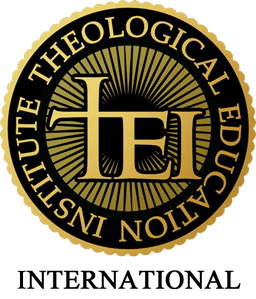Notes on the Sociology of Religion (4)
John C. Rankin
Averroes (Ibn Rushd): On the Harmony of Religion and Philosophy (London, Trustees of the E.J.W. Gibb Memorial, 1976).
_________________
- Background: Ibn Rushd, a/k/a Latinized name Averroes, 1126-1198 A.D.; Andalusian scholar and famous Islamic philosopher and polymath; born in Cordoba, died in Morocco; influenced by Avicenna (Ibn Seena, ca. 980-1037), Persian scholar and influence of neoplatonism; lived in both Almoravid and Almohad dynasties; banished to Morocco for rationalist views in contrast to ascendant Sufi mysticisms.
- Commentator on Aristotle (in Arabic translations, which did not include Politics); jurist in the Maliki school.
- Key work: The Incoherence of the Incoherence, defending Aristolelian philosophy against al-Ghazali’s claims in The Incoherence of the Philosophers; a) Al-Ghazali believed Aristotelianism, as represented in Avicenna, was inconsistent with and an affront to Islam; b) Averroes argued that Avicenna was a distortion and Al-Ghazali was wrong, thus aiming at the wrong target.
- Nature of connection between religion (Islam) and philosophy: a ) if teleological study of the world (study of existing beings) = philosophy, then the Law commands it; b) Qur’an: “Reflect, you have vision”; c) the text is urging the study of the totality of beings; c) study of logic and religion go hand in hand; not heretical; d) nor is it heretical to study prior non-Muslim thinkers.
- Means of study: a) demonstration (empirical data of the sciences); b) dialectical; c) rhetorical.
- Obligation to “know various kinds of legal syllogisms”: a) it existed among first believers, and thus cannot be heretical; b) unexamined subjects merit de novo study; examined subjects require attention to their history first; c) analogy to study of geometry and astronomy.
- Philosophy contains nothing opposed to Islam: a) if apparent meaning of Qur’an conflicts with the demonstrative, it must be interpreted allegorically; b) standard metaphorical practices of Arabic; c) all Muslims accept this – disagreement only comes concerning the extent of the application; d) double meanings and apparent contradictions are purposed for the learned (elite) to study deeper.
- Allegorical interpretations must never violate Islamic consensus, when certain: a) unanimity on the theoretical not possible; only with the practical; b) distinction between apparent and inner meanings; c) debate over pre-eternity of the world and Allah’s knowledge of particulars = a debate over naming – created or self-existent + intermediate position of not created, but was brought into existence (ex nihilo?) + “So those who are more impressed with its resemblance to the pre-eternal than its resemblance to the originated name it ‘pre-eternal,’ while those who are more impressed with its resemblance to the originated name it ‘originated.’ But in truth it is neither really originated or pre-eternal, since the really originated is necessarily perishable and th erally pre-eternal has no cause” d) never a consensus against allegorical interpretations – thus freedom given here to the elite; e) “There are allegorical interpretations which ought not to be expressed except to those who are qualified to receive allegories”; f) “Their apparent meaning imply that the heavens were created from something”; h) theologians interpret this allegorically: “For it is not stated in Scripture that God was existing with absolutely nothing else”: i) a learned elite is excused for erring here; but not an unqualified person; j) central elitist/masses distinction: inexcusable for “lower classes” to interpret with allegory for texts w/apparent meanings; equals unbelief; k) double meaning in Qur’an (apparent v. inner) is for purpose of distinguishing the “demonstrative class” or “the best class or beings,” from the “lower classes”; l) in middle case, where there is no agreement as to whether a text is apparent or allegorical, liberty on secondary matters, but unity demanded on primary matters (e.g., the nature of the afterlife v. the existence of the afterlife); m) demonstrative books should be banned for the unqualified.
- Prohibition of philosophical Interpretations of Qur’an to the majority: a) simple truths to the masses – right practices that yield happiness and misery, here and in the next life – Qur’an teaches directly; and by symbols (demonstrative, dialectical and rhetorical arguments; former accessible only to the elite; not everyone has “the ability to take in the demonstrations”); b) methods in religion are of four classes: 1. common – direct meaning without symbolism, 2. certain premises – admit of allegorical interpretation, 3. premises based on accepted ideas without being “accidentally certain,” and do not admit of allegorical interpretations, 4. premises based on accepted ideas and accidental certainty, but symbols are unclear; domain of the elite to interpret them allegorically, while the masses take them in their apparent meaning; c) the people in relation to the Qur’an are of three classes” – 1. rhetorical class = majority of people, not people of interpretation, 2. dialectical interpretation class = some people, by nature or habit, 3. demonstrative class = philosophic elite; d) “To explain the inner meaning to people unable to understand it is to destroy their belief in the apparent meaning without putting anything in its place. The result is unbelief in learners and teachers. It is best for the learned to profess ignorance, quoting the Qur’an on the limitations of man’s understanding” – 1. “Certain people have injured the masses particularly, by giving them allegorical interpretations which are false. These people are analogous to bad medical advisers”, 2. “As for the man who expresses these allegories to unqualified persons, he is an unbeliever on account of his summoning people to unbelief”, 3. “It was due to the wrong use of allegorical interpretations by the Mu’tazilites and Ash’arites that hostile sects arose in Islam” (calling unbelievers those who did not accept their methods, when they themselves, says Averroes, were the unbelievers), 4. There are proper methods for teaching the people, in the Qur’an, popular portions and not esoteric ones; e) “Summoning the masses to a middle way of knowing God the Glorious.”
- Allah’s foreknowledge: a) “The problem: How can God be aware of a change in reality without a corresponding change occurring in His eternal Knowledge?”, and hence, the question of state of existence of these realities – in pre-eternity, eternity; b) “God’s foreknowledge of all change does not solve the problem, as the theologians think, for the actual occurrence of the change presumably adds something new to His Knowledge” and “Thus the difficulty is compelling. In sum, it can hardly be conceived that the knowledge of a thing before its exists can be identical with the knowledge of it after it exists”; c) “Nor is Ghazali’s solution satisfactory. He regards God’s Knowledge as a term in a relation, which does not change in itself when that to which it is related, the known object, changes its relation to it. But knowledge is a relation, not a related term”; d) answer lies in distinguishing cause and effect – “The correct solution is that the eternal Knowledge if the cause of all things, not their effect as originated knowledge is. Therefore It does not change when they change.”
- The future life: Three interpretations of symbols of afterlife: a) the life beyond is the same in kind, but not limited in duration; b) it is different in kind, spiritual – suitable for the masses; c) it is corporeal in nature, but bodies are different – suitable only for the elite (Platonic nuances and immortality of the soul); d) this leads to three sects in Islam; d) where the apparent meaning is apparent, allegory is impermissible; e) where there is symbolism – 1. when it is difficult to distinguish between the symbol and the symbolized, only the educated elite may interpret allegorically, 2. when it is easy to know both the symbol and the symbolization, the masses are allowed to interpret allegorically, 3. when the symbol is unclear, but the symbolization is clear, only the educated elite can understand the true interpretation, and they must give an easy allegorical explanation for the masses, 4. when the symbol is clear, but the symbolization is unclear, it is preferable to deny the existence of symbolization (if made known, it will confuse the masses and lead to popular and erroneous); f) “It now remains for us out of our programme only to study what portions of Scripture it is permissible and what it is not permissible to interpret allegorically, and, when it is permissible, to whom permission is given” – 1. idea as outwardly expressed is the idea really intended, 2. Idea as outwardly expressed is not the idea really intended, thus need for i] reality only known through difficult composite syllogisms – elite, ii] Idea and symbol easily known – for the masses, iii] symbol easily perceived, but not so its reality – elite territory, iv] Easy to know it is a symbol, but difficult to know what it symbolizes – elite; g) “From our account you have now become aware of the amount of error that occurs as a result of allegorical interpretation.”
- Observations: a) war between theology that divides Islam into sects, and proper use of philosophy which unifies the umma; b) unity gained through elitism of philosophers in deciding what the masses may learn and what they may not learn – 1. Plato’s philosopher-king. 2. Dostoevsky’s Grand Inquisitor; c). speculative nature rooted in confusion among masses when reading the Qur’an d) question of the nature of Allah and his knowledge relative to time, space and number, in terms of cause and effect: unidimensional or multidimensional?
###


